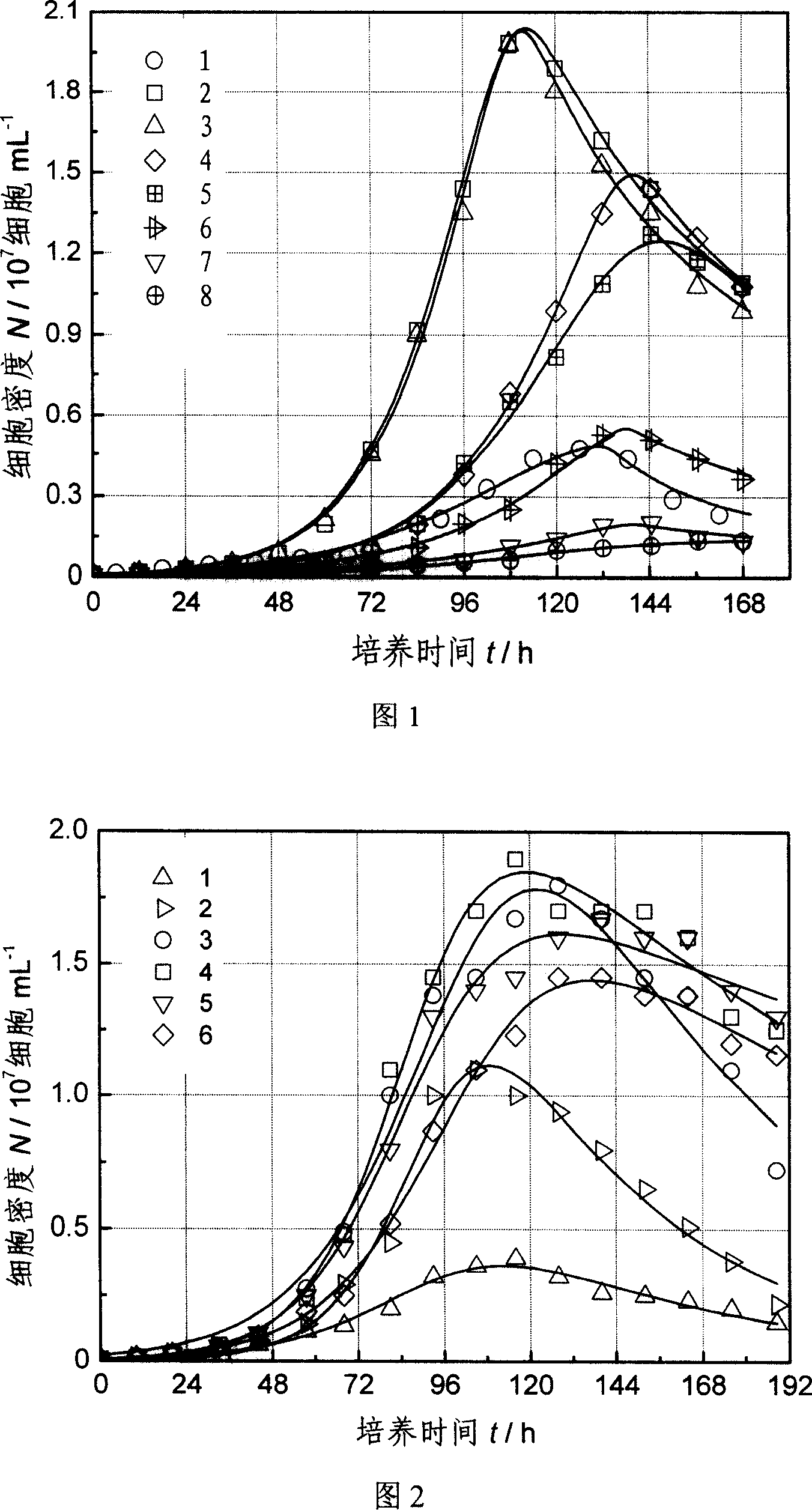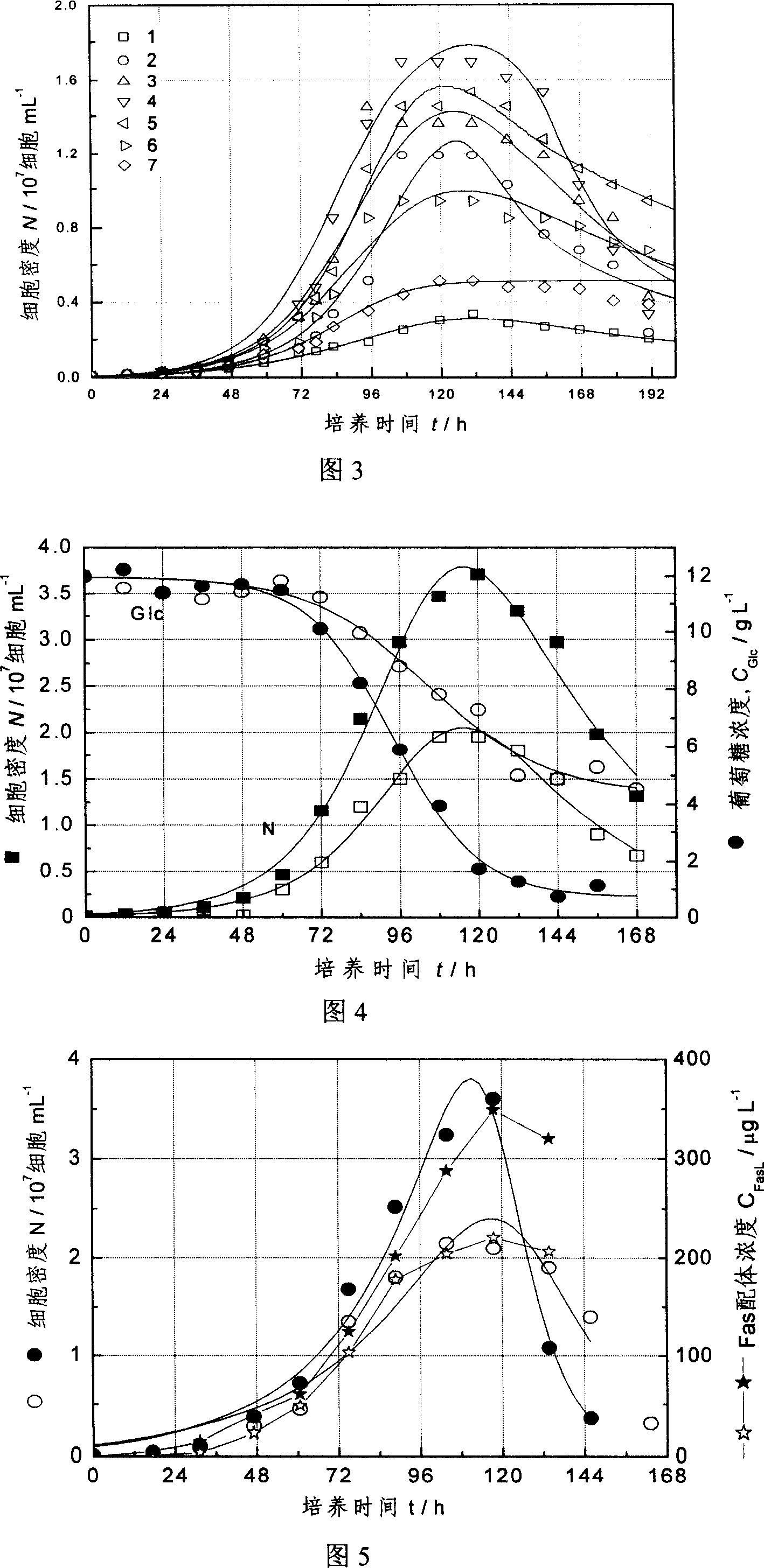Semi-synthetic culture medium for dictyostelium discoideum and preparing method thereof
A semi-synthetic and culture medium technology, applied in the direction of fungi, etc., can solve the problems of slow cell growth and achieve the effects of increasing production, increasing gene expression, and reducing costs
- Summary
- Abstract
- Description
- Claims
- Application Information
AI Technical Summary
Problems solved by technology
Method used
Image
Examples
Embodiment 1
[0045] Embodiment 1: the selection of carbon source type
[0046] On the basis of the initial culture medium, glucose was replaced with glucose, maltose, mannose, sucrose, fructose, lactose and glycerol at the same concentration (both 10.0 g / L) to prepare different culture media. Shake flask cultures of Dictyostelium discoideum were carried out under the same culture conditions (as described in the instructions). The initial medium was HL-5C medium. For comparison, the cultivation of Dictyostelium discoideum in the complex medium without adding carbon source was also carried out. The result is shown in Figure 1. The results showed that when glucose or maltose was used as the sole carbon source, the cells grew well, and the maximum cell density could reach 2.0×10 7cells / mL, and the cells grow rapidly. Both lactose and sucrose inhibited cell growth, glycerol had little effect on its growth, while fructose and mannose both promoted cell growth, but their effect was not as goo...
Embodiment 2
[0047] Embodiment 2: Optimization of glucose concentration
[0048] On the basis of the initial medium, different concentrations of glucose (0g / L, 5g / L, 10g / L, 15g / L, 20g / L, 30g / L) were used as carbon sources to prepare medium. Shake flask cultures of Dictyostelium discoideum were carried out under the same culture conditions (as described in the instructions). The initial medium was HL-5C medium. The result is shown in Figure 2. The results show that the glucose concentration directly affects the maximum cell density, and the optimal glucose concentration is in the range of 10-15g / L. At this time, Dictyostelium grows well, and the maximum cell density can reach 1.9×10 7 cells / mL. When glucose is insufficient, the cell density will decrease significantly, only reaching 2.6×10 6 cells / mL. But when the glucose concentration was higher than 20g / L, the maximum cell density decreased instead.
Embodiment 3
[0049] Embodiment 3: Optimization of maltose concentration
[0050] On the basis of the initial medium, glucose was replaced with maltose of different concentrations (0g / L, 5g / L, 10g / L, 15g / L, 20g / L, 25g / L, 30g / L) to prepare the medium. Shake flask culture of Dictyostelium discoideum was carried out under the same culture conditions. The initial medium was HL-5C medium. The result is shown in Figure 3. The results show that the concentration of maltose directly affects the maximum cell density, and the optimum concentration of maltose is in the range of 15-20 g / L. At this time, Dictyostelium grows well, and the maximum cell density can reach 1.9×10 7 cells / mL. When the medium lacked maltose, the maximum cell density was greatly reduced and only reached 2×10 6 cells / mL. When the initial maltose concentration is higher than 20g / L, the cell growth is inhibited instead, and the maximum cell density is low. For example, when the initial maltose concentration is as high as 30g / ...
PUM
 Login to View More
Login to View More Abstract
Description
Claims
Application Information
 Login to View More
Login to View More - Generate Ideas
- Intellectual Property
- Life Sciences
- Materials
- Tech Scout
- Unparalleled Data Quality
- Higher Quality Content
- 60% Fewer Hallucinations
Browse by: Latest US Patents, China's latest patents, Technical Efficacy Thesaurus, Application Domain, Technology Topic, Popular Technical Reports.
© 2025 PatSnap. All rights reserved.Legal|Privacy policy|Modern Slavery Act Transparency Statement|Sitemap|About US| Contact US: help@patsnap.com


